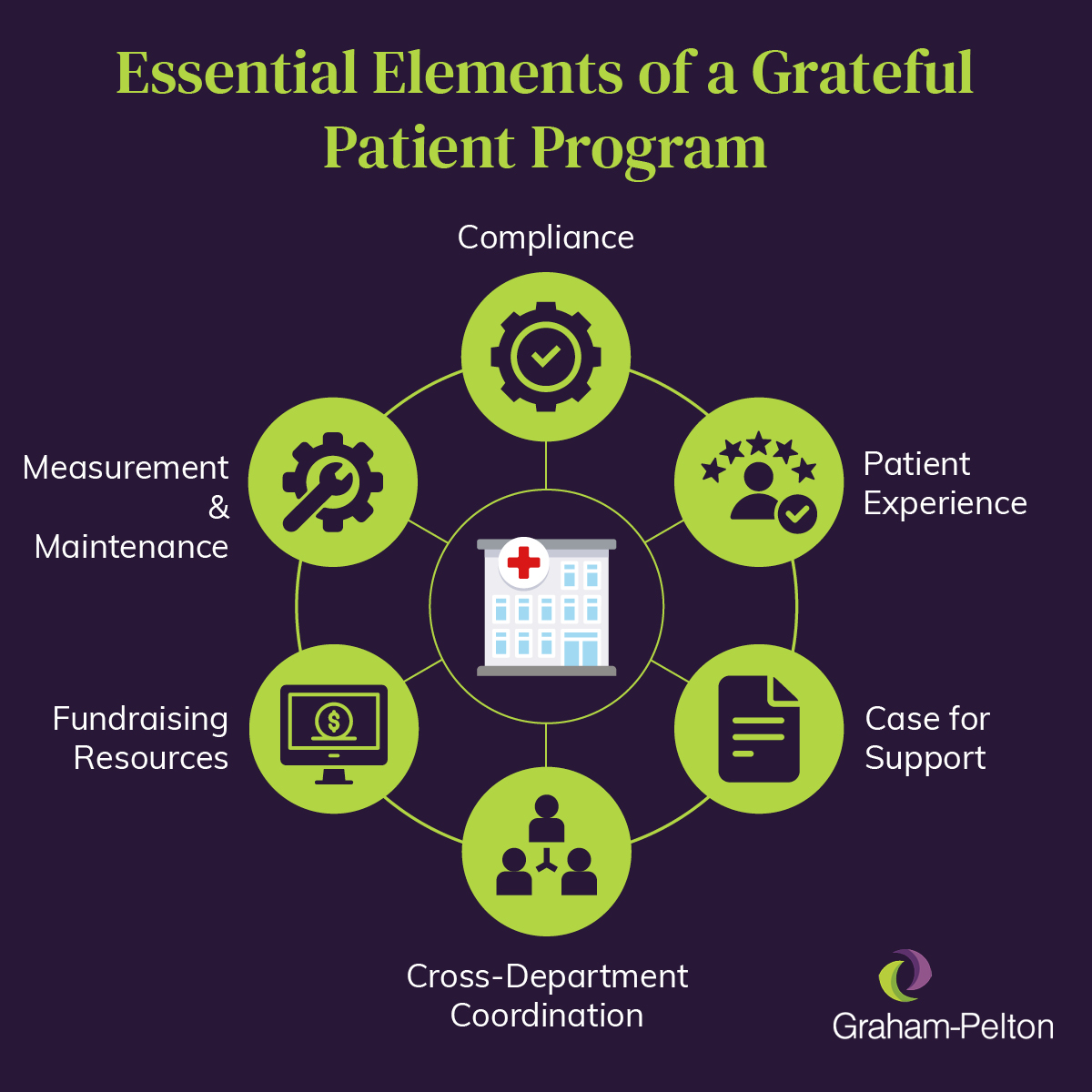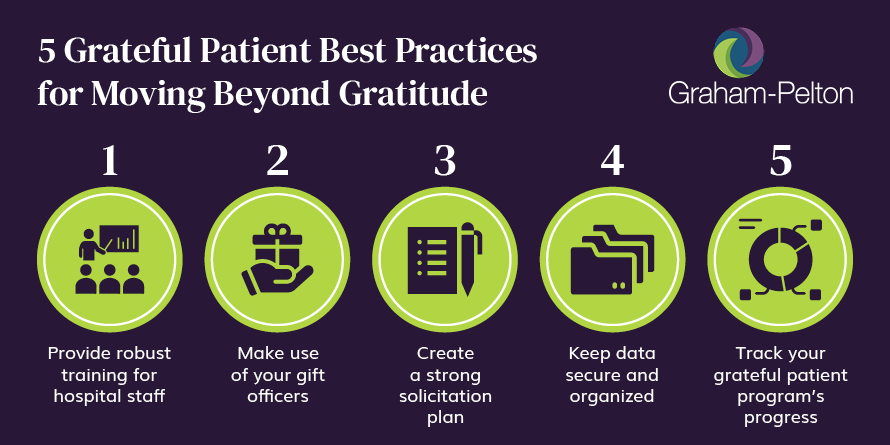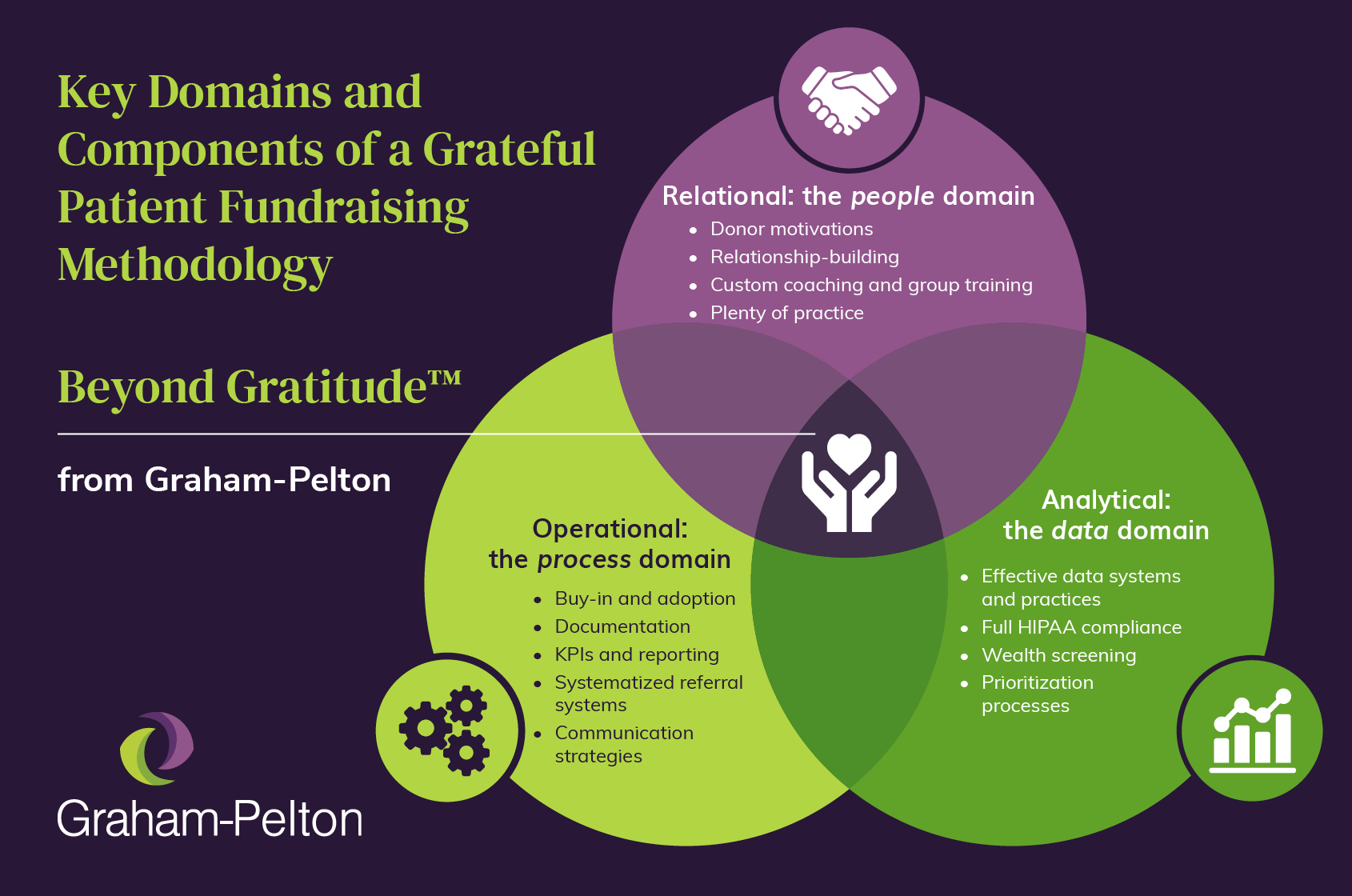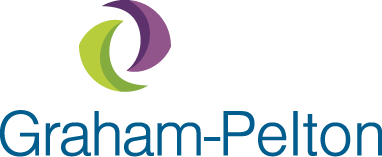
For healthcare institutions, grateful patient fundraising programs are an essential component of a robust development strategy. They give patients an outlet to go beyond a heartfelt “thank you” and philanthropically express their gratitude to the healthcare providers who made a difference in their lives or the lives of their loved ones.
However, grateful patient fundraising is more complex than fundraising for other types of organizations—institutional complexities, patient privacy regulations, and the deeply personal nature of patient-clinician relationships all make these programs uniquely challenging.
But institutions of all shapes and sizes, including hospitals, universities, and clinics, build and maintain highly effective grateful patient fundraising programs that sustain their work and help them serve more patients over time. How? We’ll review all the essentials in this guide:
- What is Grateful Patient Fundraising?
- Essential Elements of an Effective Program
- How to Start a Grateful Patient Program: 12 Steps
- Grateful Patient Fundraising Best Practices
- Measuring Your Program’s Success
- A Patient-First Approach
What is Grateful Patient Fundraising?
Healthcare institutions conduct grateful patient fundraising by soliciting donations from patients or family members they’ve served who have had positive care outcomes and have both the capacity and inclination to give large gifts.
It’s a form of nonprofit development and requires a full identification-cultivation-solicitation-stewardship cycle like other forms of major gift fundraising. However, grateful patient fundraising is distinct in its healthcare context and highly personal nature.
What’s a grateful patient program?
A grateful patient program consists of all the steps and resources that a healthcare institution uses in order to consistently secure grateful patient donations as an ongoing initiative. This involves establishing processes for identifying prospects, building relationships with them, soliciting gifts, keeping them engaged, coordinating across departments, and managing the backend logistics that keep the program running.
At their core, grateful patient fundraising programs are designed to foster a culture of philanthropy and raise money to support the institution’s work. An intentional framework allows this work to be done as strategically, efficiently, and effectively as possible.
Why do hospitals need grateful patient fundraising programs?
Grateful patient fundraising programs accomplish two key objectives:
- Raising financial support for the institution’s work, including research, tech and equipment upgrades, endowment, and general operational funding
- Giving patients and their families a clearly defined opportunity to express gratitude in scale with the impact that medical care has had on them
Having a dedicated program in place allows hospitals and clinics to pursue these objectives strategically. It’s very difficult to allocate time and resources across different parts of a complex organization to vague initiatives. But when grateful patient fundraising is centralized and managed as an intentional priority, it can be done more efficiently, drive greater impact, and generate larger returns.
A well-run program will bring additional benefits that can help the institution as a whole, namely a strengthened culture of collaboration and cross-departmental partnership. Building your internal capabilities this way will not only make a vast difference to the success of your program but can also help streamline and improve your institution’s operations across the board.
What resources do you need to run a grateful patient program?
Like other fundraising programs, effectively managing a grateful patient program will require a few specific tools and processes:
- A database for storing and managing fundraising data and donor records. A dedicated fundraising CRM that includes purpose-built features will likely be the best choice because it 1) keeps fundraising and sensitive healthcare records fully separate and 2) not all of your fundraising initiatives will be targeted to past or current patients.
- Software integrations and clear data reporting protocols. Having a separate fundraising CRM means you’ll need standardized ways to share authorized relevant patient data between clinicians and development staff.
- Referral processes and training for frontline staff. Grateful patient programs thrive on cross-department communication. Your organization’s staff who directly engage with patients will need training, encouragement, and clear processes for reporting potential prospects to the relevant individuals who manage your fundraising program.
- Compliance and technology audits. Patient privacy and data security compliance are extremely important for these programs. Before investing heavily in your new initiative, a review or audit conducted by third parties is highly recommended.
- Materials to share with patients and prospects. You’ll need a case for support, brochures, email and phone scripts, posters, newsletters, mailers, and more to build connections between your program and prospective donors once they’ve been identified.
We’ll explore all of the resources and considerations to keep as we walk through the steps for establishing your grateful patient program below.
Essential Elements of an Effective Grateful Patient Program
What are the underlying elements and principles that, if mastered and managed effectively, will set up your grateful patient fundraising program for success? We break them down into six key categories:

- Compliance. Patient privacy and data security are paramount. All tools and processes put in place to support the program must comply with HIPAA requirements and best practices.
- Patient Experience. Engaging with your fundraising program should never create an overall worse experience for patients—your first responsibility and priority should always be to ensure positive medical experiences and outcomes.
- Case for Support. Why would prospective donors to your grateful patient program want to give? You’ll need a thorough understanding of donor motivations. Your development process will need to involve learning more about these motivations at an individual level.
- Cross-Department Coordination. How will clinicians and fundraisers communicate? How will prospects be referred to your fundraising program? Communication, training, cultural buy-in, and a shared understanding of everyone’s roles are uniquely important for these fundraising programs.
- Fundraising Resources. Staff, technology, and fundraising-specific processes should be in place to manage the logistics and day-to-day work of running a fundraising program.
- Ongoing Measurement and Maintenance. Regularly measure your program’s effectiveness and outcomes, report its results, analyze potential improvements, and maintain its logistics over time to ensure its success.
When these elements come together cohesively, your institution will have a robust foundation on which to grow a successful fundraising program.
If you’re in the early stages of developing a program, take a moment to think through each of these elements. Where is your organization already succeeding or well-equipped? Which areas can you already anticipate will need extra attention? Keep them in mind as you explore the steps below.
How to Start a Grateful Patient Program: 12 Steps
Creating a detailed implementation strategy for your grateful patient fundraising program will help set your efforts up for success from day one. Our complete checklist resource covers all the details, but here are the essentials to keep in mind:
- Decide to move forward. Gauge your program’s feasibility, make the decision to move forward, and recruit a small core team to help.
- Seek professional support. Most institutions opt to hire external experts to support their fundraising, technology, and/or compliance needs.
- Conduct a Diagnostic Review and secure buy-in. Take a closer look at what will be required to establish your program and what you’ll need to get there, similar to a fundraising feasibility study.
- Secure leadership buy-in and engage key clinical partners. Leadership support is essential, as is involvement from physicians, faculty, and nurses.
- Identify and secure necessary staffing resources. Determine whether you need to hire major gift officers (and how many), and account for them in your program’s startup budget.
- Identify and secure necessary tech investments or upgrades. Consider whether you need to purchase and/or upgrade fundraising or data management software to support your program, and account for it in your budget.
- Research privacy laws and internal regulations. Research how your fundraising process will interact with HIPAA and other relevant patient privacy regulations.
- Train all stakeholders on their roles. Provide all relevant departments with role-specific orientation and training on your grateful patient fundraising process.
- Set up new systems as needed. Implement any identified investments and lay out concrete rollout plans and timelines.
- Promote and explain your program internally. Begin promoting your program and its purpose to the entire organization.
- Continue building buy-in and producing support materials. Continue securing buy-in from key stakeholders, and produce supporting materials for your fundraising team.
- Get your referral pipeline up and running. Conduct an initial round of prospect qualification and wealth screening, and monitor progress.
If you have a long-standing grateful patient program at your healthcare institution, it’s worth taking the time to make sure that all of these steps were successfully completed during its initial implementation. You can overhaul or improve foundational gaps and weak points using these steps as a guide. Then, move on to improving your program by applying best practices.
5 Grateful Patient Best Practices for Moving Beyond Gratitude

1. Provide robust training for hospital staff
Providing the necessary training to help hospital staff navigate patient relationships in a new fundraising context is crucial. While healthcare professionals are more versed in the sensitive nature of patient relationships, they are less likely to know how to encourage patients to become donors without risking those trusted relationships. Clarify that they will not be expected to ask for donations. Rather, they will be trained to identify potential donors and refer them to your development team for outreach.
Creating a stronger relationship between physicians and fundraisers is the foundation of our approach at Graham-Pelton, helping the two departments establish a relationship based on trust and mutual success.
Specifically, we identify which of your hospital staff will be most instrumental in your grateful patient program. Then, you can take a targeted, low-stress approach, training these clinicians to participate by learning to listen for signals that indicate a patient’s inclination for philanthropy. Because this is such a crucial part of the process, Graham-Pelton coaches healthcare professionals to find their own style and voice when talking about philanthropy.
2. Make use of your gift officers
As you begin to identify prospective donors and reach out to them, make the most of your development department. If you’ve hired new gift officers, it’s a waste of your investment to not entrust them with prospects. Give them the autonomy to prioritize their work and find ways to you can improve your program. Empower them to take the lead on qualifying and cultivating potential donors. They have the expertise to work more effectively with donors than members of your staff who have never engaged in this type of work before.
Gift officers can help you identify:
- Which prospects have a large capacity to give but are not inclined to give
- If donors have been incorrectly approached for donations before
- Patients who have not yet been convinced to support your cause
- Prospects not previously identified or approached
Giving fundraisers the autonomy to do the work they were hired for will allow you to capitalize on their wealth of knowledge and make a bigger impact on your grateful patient program. Plus, as your gift officers feel empowered in their roles, they’ll experience more job satisfaction and you’ll retain them for the long term.
3. Create a strong solicitation plan
With the help of your gift officers, you’ll have a list of prospects to cultivate relationships with and eventually ask for donations. However, before you take on the actual task of solicitation, it’s crucial to have a well-developed plan that accounts for the sensitive nature of patient relationships.
A few essential things to consider when creating your solicitation playbook include:
- Timing. Because many of your donors are undergoing, have undergone, or had close family and friends undergo surgery or treatment, your team needs to be selective about when they engage with prospects. The last thing you want is for your team to come off as pushy or insensitive.
- Previous donations. Have a plan in place for how to approach donors who have already contributed to your hospital. The solicitation process for an existing donor will look different than your process for building a relationship with a new donor because new donors will require more up-front explanation and guidance as to the purpose of your program.
- Past solicitations. If your team has already reached out to a prospective donor before, you should be aware of who engaged them, when, and how. If they did not respond well to a previous solicitation, take the time to examine why and if asking again in a new way is worth trying.
Having clear guidelines for how and when your team engages prospective donors will help you avoid confusion and repeat solicitations while also developing and maintaining healthier relationships with donors.
4. Keep data secure and organized
There are many rules and regulations when it comes to patient data, and the absolute last thing you want to do is violate a patient’s privacy. Using HIPAA-compliant software and inviting your compliance officer to weigh in early in the process is crucial. The transfer of information between your clinical and fundraising settings must be carefully considered, with secure processes designed to protect privacy and limit the number of involved individuals.
Any third-party vendors you work with to design and implement your program should also be well-versed in healthcare compliance. For example, Graham-Pelton’s Beyond Gratitude™ program heavily emphasizes patient privacy and data integrity, centering these elements in our strategies to help give key stakeholders confidence in the new program from the start. We evaluate an institution’s cultural acceptance and readiness for a grateful patient fundraising program through a complimentary Diagnostic Review, outlining the key needs that must be met before a program can move forward responsibly.
Data security and HIPAA compliance simply cannot be overlooked. Without proper security and procedures, you risk the integrity of your entire hospital. Partnering with an experienced consultant can make this part of your program much more manageable.
5. Track your grateful patient program’s progress
If you are just starting out with grateful patient fundraising, resist the urge to track everything. The sheer amount of data that a robust fundraising program can generate can quickly become overwhelming.
Instead, start with a handful of key performance indicators (see examples below) that you identify as particularly valuable or relevant to your goals in order to measure early success. You can build on these metrics each year as your program grows and matures.
Actively tracking your program’s progress allows you to proactively address problems and strategy gaps. Additionally, beyond grateful patient contexts alone, having clear records of donor contributions and the impact they’ve made allows you to communicate potential impact to all new prospects across the board. Robust fundraising data that demonstrates well-run, impactful programs can be a powerful tool when soliciting donations.
Measuring Your Grateful Patient Program’s Success
Grateful patient programs serve to support your healthcare institution’s mission in more ways than one.
Of course, a grateful patient program’s goal is to secure donations and generate revenue for the institution. However, these are not the only factors that should be considered when evaluating a program’s performance, especially if you’re just getting started. Your program should also aim to build a loyal base of dedicated advocates and donors. Developing strong and authentic relationships with grateful patients helps boost the authority of your program (and gives you a great marketing tool for securing future support).
When patients feel supported beyond the scope of their physical care, it can lead to better patient outcomes, in addition to affirming their belief in your mission. Ensuring that this is the standard for all patients will go a long way in giving current and future prospective donors assurance that your healthcare institution is more than deserving of their donations.
You can quantify your success in this area by tracking donor retention or developing a scale for relationship warmth for your gift officers. And to paint the broader picture of your program’s performance, collect additional metrics and details. Here are some valuable KPIs to build into your reporting processes:
- ROI
- Donor acquisition rate
- Average gift size over time
- Prospect-to-donor conversion time
- Response rates to different grateful patient communications
- Response quality to different grateful patient stewardship techniques
- The number of patient visits to the hospital versus total gift size
These success metrics can give you a comprehensive way to assess your improvements year-over-year, for instance by allowing you to continually refine your segmentation strategies and qualification criteria based on proven results. Like with any program, you should work to increase your impact each year, and in order to do that, you first need to identify where you currently stand. From there, you can set realistic and measurable goals.
A Patient-First Approach to Grateful Patient Fundraising
Graham-Pelton is a leader in healthcare fundraising consulting through our Beyond Gratitude™ methodology that puts patients first and empowers healthcare providers to discuss philanthropy in natural and authentic ways. Developed through years of one-on-one coaching sessions with over 2,500 healthcare providers around the country, Beyond Gratitude is a comprehensive approach that can be fully tailored to any institution’s unique culture, needs, and concerns about grateful patient fundraising.
Our philosophy grows from personal experience—sometimes patients and family members aren’t just looking for a way to say, “thank you” to the healthcare providers and organizations that made a difference in their lives. Rather, they’re seeking closure while expressing gratitude in line with the magnitude of their experiences. We see grateful giving as a healing motivation felt at a very personal level, not a cut-and-dry philanthropic mechanism.
Here’s how one physician, Dr. Angela Alistar, Medical Director of GI Medical Oncology at Morristown Medical Center in New Jersey, experienced the Beyond Gratitude philosophy in action:
From this deeper understanding of why patients and donors feel compelled to go beyond gratitude, we’ve developed an industry-leading framework for grateful patient fundraising programs. It’s built on five fundamental principles:
- Asking is not the clinician’s job. Grateful patient fundraising must be team-based, with fundraisers playing key roles.
- Not all gratitude is philanthropic gratitude. The key to success lies in recognizing when patients want to go beyond simpler expressions of gratitude.
- Philanthropy can be part of the healing process. Giving back to an institution that’s had such a personal impact can bring patients and families closure for life’s challenges.
- Practice prevents transactionality. Tailored coaching should give healthcare providers the tools they need to authentically discuss philanthropy with patients in their own styles and voices.
- Data is integral to a patient-centered approach. When fundraisers are equipped with HIPAA-compliant data, institutions can develop smarter, more sensitive, and more patient-centric strategies.
To enact these principles and help healthcare institutions build robust fundraising programs, our Beyond Gratitude services are delivered in three key domains:

- Relational: the people domain
- Grateful patient programs are built through relationships between patients, healthcare providers, fundraisers, and administrators. Our methodology stands out for its emphasis on coaching, customized group training, and practice.
- Analytical: the data domain
- Data is essential for successful grateful patient fundraising. We can help you build effective data systems and practices that empower your team to identify the most appropriate prospects for qualification and outreach.
- Operational: the process domain
- The right infrastructure, systems, workflows, and resources will sustain your program for the long run. Our operational guidance will not only help you secure institutional buy-in and adoption but also keep your program running as smoothly as possible.
If your hospital, clinic, or university needs to develop or improve its grateful patient fundraising strategies, you need a true partner. Beyond Gratitude is the proven methodology backed by healthcare providers. Support from the fundraising experts at Graham-Pelton will empower your entire team to approach grateful patient fundraising confidently, professionally, and in ways that are uniquely their own.
Learn more about the Beyond Gratitude™ methodology or reach out to discuss your institution’s goals and needs. We can start laying out a customized strategy that will equip your institution to thrive for years to come.
To learn more about nonprofit development best practices, explore these additional resources from the Graham-Pelton team:
- Hallmarks of a Strong Culture of Philanthropy in Healthcare
- What Healthcare Can Learn from Higher Education Capital Campaigns
- Prospect Portfolio Management: The 3-Step Strategy You Need
- Building a Case for Support That Inspires Action: 5 Steps
- Why Donor Qualification Is Key to Fundraising Success



